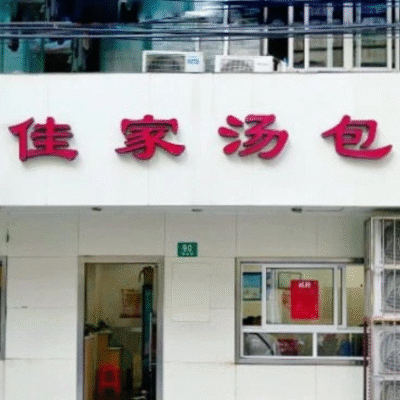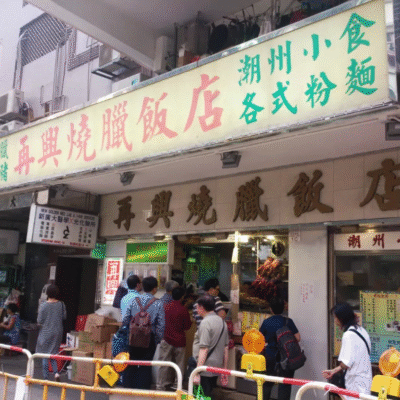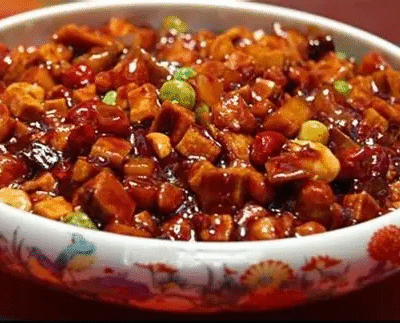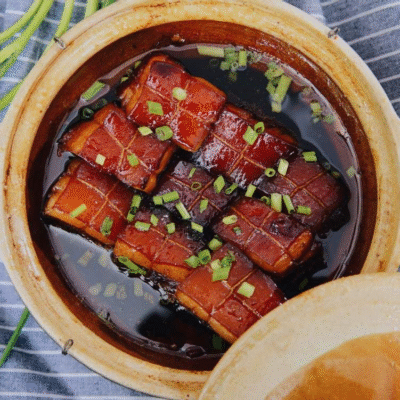Shenzhen is the city with the largest migrant population in mainland China, attracting workers from all over the country who bring with them a rich diversity of regional culinary traditions.
Beyond its own local specialties, Shenzhen has become a melting pot of various provincial cuisines, gradually evolving into a hub for gastronomic culture nationwide. This article will introduce several representative traditional dishes of Shenzhen, as well as recommend some popular non-local foods that have gained widespread acclaim here, allowing you to experience the city’s vibrant and diverse food scene.
Shenzhen Traditional Dishes
When it comes to traditional food in Shenzhen, there are several beloved local dishes that are absolute must-tries for anyone wanting to savor the city’s authentic flavors. What’s more, most of these dishes are affordable and popular among everyday locals. Let me take you through some of these delicious favorites.
Roast Goose
Roast goose is one of the most iconic dishes in Cantonese cuisine, and it holds a special place in the hearts of many locals in Shenzhen. With its perfectly crispy skin, tender meat, and rich, savory aroma, it’s a true culinary masterpiece that reflects the precision and skill of traditional Cantonese roasting techniques.

The goose is typically marinated for hours in a blend of soy sauce, five-spice powder, and other aromatic herbs, then roasted over an open flame or in a specially designed oven until the skin turns a deep golden brown. The key is to achieve a delicate balance — crispy on the outside, juicy and flavorful on the inside.
In Shenzhen, roast goose is not only served in high-end Cantonese restaurants but is also commonly found in local roast meat shops (烧腊店). It’s often paired with plum sauce, and enjoyed with steamed rice or noodles.
I previously wrote an article about Gongming Roast Goose — you can use it as a reference.
In terms of price, a single serving of roast goose rice typically costs between 25 to 45 RMB, depending on the type of restaurant. A whole roast goose generally ranges from 180 to 280 RMB. Many street-side roast meat shops also offer half-geese for takeaway, making it convenient for families to share.
Here’s a clean English table summarizing the popular roast goose spots in Shenzhen:
| Restaurant Name | Location | Highlights |
|---|---|---|
| Chan Kee Roast Goose (陈记烧鹅) | Near the intersection of Huaqiangbei Road and Hongli Road, Futian District | Traditional charcoal-roasted goose with crispy skin and juicy meat; known for flavor and value. |
| Yue Kee Roast Goose (裕记烧鹅) | Qiaotou Community, Fuyong Town, Bao’an District | 30-year-old local favorite with long queues; offers authentic taste and whole/half geese. |
| Gongming Roast Goose (龚明烧鹅) | Heshui Village, Gongming Town, Guangming District | Famous for crispy skin, tender meat, and flavorful bones; popular among Hong Kong visitors. |
If you’re a fan of Peking duck, roast goose is something you absolutely shouldn’t miss. Its flavor is deeper, richer, and more intense. For many in Guangdong, it’s not just a festive dish — it’s part of everyday life.
Your ultimate guide to eating in Shenzhen
Our team has created a detailed travel guide to Shenzhen, featuring popular restaurants, food spot addresses, and crowd-sourced rankings.
With this guide, you can map out your travel route and explore Shenzhen’s most beloved eateries — right down to which specific dishes each place is known for. It’s designed to make your search for great food and smooth travel planning easier than ever.
Steamed Rice Rolls (肠粉)
Steamed rice rolls, or cheung fun in Cantonese, are a beloved breakfast staple in Shenzhen and across southern China. This traditional dish features smooth, delicate sheets of rice noodle that are freshly steamed and then gently rolled with a variety of fillings, such as shrimp, beef, barbecued pork (char siu), or vegetables.

What makes Cantonese-style rice rolls unique is their texture — soft and silky, yet strong enough to hold flavorful fillings without falling apart. Once rolled, they are drizzled with a sweet-savory soy-based sauce, sometimes topped with a bit of sesame oil or fried shallots for added aroma.
In Shenzhen, you can find cheung fun in everything from traditional dim sum restaurants to small breakfast stalls on street corners. It’s often eaten alongside a bowl of congee or soy milk, making for a comforting, satisfying morning meal.
Prices for a serving typically range from 8 to 15 RMB, depending on the filling and the place. For an authentic local experience, try ordering it freshly made at popular spots like:
- Huang Ji Rice Rolls (黄记肠粉) — Known for its handmade rice sheets and generous fillings
- Shi Ji Rice Rolls (石记肠粉) — A street food favorite with long queues in the morning
Simple yet flavorful, steamed rice rolls represent the elegance of Cantonese cuisine — light, balanced, and endlessly comforting.
Yao Chicken (Salt-Baked Chicken / 盐焗鸡)
Salt-baked chicken, known locally as Yao Chicken (though more commonly referred to as Yan Ju Ji / 盐焗鸡 in Chinese), is a signature dish with roots in the Hakka community — which has a strong presence in Shenzhen and its surrounding areas.
This dish is deceptively simple but deeply flavorful. A whole chicken is first marinated with coarse salt, ginger, and sometimes Chinese herbs, then wrapped (traditionally in parchment or clay) and slow-baked in a wok or oven filled with heated rock salt. The result is tender, juicy meat with a subtle herbal fragrance and a delicate salty crust, all without any added oil.
The magic of salt-baked chicken lies in its natural flavor. The chicken is cooked in its own juices, locking in moisture while the salt gently seasons the meat from the outside in. The skin remains slightly golden and fragrant, while the meat practically falls off the bone.
In Shenzhen, you can find salt-baked chicken at Hakka restaurants, traditional Cantonese eateries, and even ready-made in local markets. It’s often served cold, chopped into pieces, and accompanied by a ginger-scallion dipping sauce.
Recommended spots to try Salt-Baked Chicken in Shenzhen:
- Yongji Hakka Restaurant (永记客家菜) – Known for authentic Hakka flavors, located in Luohu District.
- Huang Family Salt-Baked Chicken (黄氏盐焗鸡) – A popular takeaway spot in Futian with pre-packaged versions perfect for travel.
If you’re interested in trying a dish that reflects both history and technique, salt-baked chicken is a must-try — a humble yet powerful expression of Guangdong’s regional culinary roots.
Sampan Congee (艇仔粥)
Sampan Congee is a classic Cantonese rice porridge that originated from the fishermen of Guangzhou, who once sold it from small boats — hence the name “sampan.” Today, this comforting dish is also widely loved in Shenzhen, especially for breakfast or late-night supper.

The porridge itself is smooth and creamy, made by slowly simmering rice until it breaks down into a velvety consistency. What sets sampan congee apart is its rich variety of toppings: sliced fish, squid, pork skin, peanuts, pickled vegetables, century egg, and sometimes even jellyfish or shrimp. Each bowl is like a miniature seafood feast, full of layers and textures.
To elevate the flavor, a drizzle of sesame oil and chopped scallions is often added just before serving. The result is a warm, savory bowl that’s light on the stomach but deeply satisfying.
In Shenzhen, sampan congee can be found in traditional Cantonese restaurants and small neighborhood congee shops. It’s commonly served with fried dough sticks (youtiao) for dipping, or paired with dim sum like steamed dumplings or rice rolls.
Typical price:
A bowl usually costs 10 to 20 RMB, depending on the number and quality of toppings.
Where to try:
- Zhou Hei Ya Congee Shop (粥黑鸭) – Known for flavorful toppings and fast service.
- Congee & Noodle House (粥粉面馆) – A local favorite offering customizable congee bowls.
Whether you’re starting your morning or winding down at night, sampan congee is one of the best ways to experience the comforting side of Cantonese cuisine in Shenzhen.
Popular Non-Local Cuisines in Shenzhen
Anhui Banmian (安徽板面)
Anhui Banmian is a popular noodle dish originating from Anhui Province in eastern China. Known for its simple yet hearty flavors, Banmian features hand-pulled wheat noodles served in a savory broth, often topped with minced pork, fresh vegetables, and sometimes tofu or mushrooms.

The key to Anhui Banmian lies in its rich, aromatic broth, which is slowly simmered with pork bones, herbs, and spices to bring out deep flavors. Unlike the spicy or oily noodle dishes found in other regions, Anhui Banmian offers a balanced, comforting taste that warms the stomach.
In Shenzhen, Anhui Banmian has become increasingly popular among the Anhui migrant community and adventurous foodies alike. Many Anhui-style noodle shops offer this dish as a specialty, often paired with side dishes like steamed buns or pickled vegetables.
Price: A bowl of Anhui Banmian typically costs around 12 to 20 RMB, depending on the restaurant and portion size.
Recommended places to try Anhui Banmian in Shenzhen:
- Lao Anwei Banmian (老安徽板面)
Address: Near Meilin Metro Station, Futian District
Highlights: Authentic Anhui flavors, handmade noodles, cozy environment. - Anhui Noodle House (安徽面馆)
Address: Buji Street, Longgang District
Highlights: Popular with locals, generous toppings, and affordable prices. - Xin An Noodle Shop (新安面馆)
Address: Near Hubei Road, Luohu District
Highlights: Traditional recipes, slow-cooked broth, friendly service.
If you want to explore authentic Anhui cuisine in Shenzhen, Anhui Banmian is a comforting and delicious choice that showcases the simple pleasures of eastern Chinese cooking.
Fei Dachu Spicy Stir-Fried Pork (费大厨辣椒炒肉)
Fei Dachu Spicy Stir-Fried Pork is a signature dish from Hunan Province in south-central China. Famous for its bold, aromatic flavors, this dish features thinly sliced pork belly stir-fried with fresh green chilies, garlic, and a touch of soy sauce, creating a rich and satisfying combination of savory and spicy notes.

The secret to Fei Dachu’s version lies in the precise balance of heat and fragrance. Unlike overly greasy or numbing Hunan dishes, this stir-fried pork focuses on highlighting the natural sweetness of pork and the vibrant freshness of green chilies. The meat is usually cooked quickly over high heat to preserve tenderness and enhance the aroma.

In Shenzhen, Fei Dachu (费大厨) has become one of the most popular chain restaurants specializing in authentic Hunan cuisine. It attracts both locals and visitors eager to experience genuine regional flavors in a clean, contemporary setting.
The dish is often served with steamed rice and side plates of pickled vegetables or cold appetizers to balance the heat.
Price: A plate of Fei Dachu Spicy Stir-Fried Pork typically costs around 48 to 68 RMB, depending on portion size and location.
Recommended Fei Dachu Locations in Shenzhen
Fei Dachu Hunan Cuisine (费大厨湘菜) – Coco Park Branch
Address: 3rd Floor, Coco Park Shopping Mall, Futian District
Highlights: Modern decor, English-friendly menu, popular among young diners.
Fei Dachu – Nanshan MixC Branch
Address: 4th Floor, The MixC, Nanshan District
Highlights: Spacious seating, consistent quality, convenient for groups.
Fei Dachu – Dongmen Branch
Address: Dongmen Pedestrian Street, Luohu District
Highlights: Great for casual dining, lively atmosphere, quick service.
Chaoshan Beef Hotpot
Chaoshan Beef Hotpot is a renowned traditional dish originating from the Chaoshan region in Guangdong Province, China. Celebrated for its emphasis on fresh ingredients and light yet flavorful broth, this hotpot features thinly sliced beef served in a clear, aromatic soup base, accompanied by a variety of beef cuts and fresh vegetables.

The hallmark of Chaoshan Beef Hotpot lies in its delicate broth, typically simmered slowly with beef bones and herbs to produce a rich but clear soup that perfectly complements the tender, thinly sliced beef. The beef is carefully selected and sliced, including cuts such as brisket, tendon, tripe, and sirloin, which are quickly cooked to retain their juicy and tender texture. A signature dipping sauce made from satay paste, garlic, and chili further enhances the dish’s authentic taste.

In contrast to Sichuan Hotpot, which is famous for its bold, spicy, and oily broth filled with chili peppers and Sichuan peppercorns, Chaoshan Beef Hotpot offers a milder, cleaner flavor profile that highlights the freshness of the beef and the subtlety of the broth. Sichuan Hotpot often features a wide variety of meats, offal, and vegetables cooked in a fiery and numbing broth, making it a more intense sensory experience. Meanwhile, Chaoshan Beef Hotpot focuses on the natural taste and texture of high-quality beef, paired with light broth and distinctive dipping sauces.

In Shenzhen, Chaoshan Beef Hotpot enjoys widespread popularity among the local Chaoshan community as well as food enthusiasts eager to experience authentic regional flavors. Numerous specialty restaurants offer this dish in a welcoming atmosphere, making it a favorite choice for gatherings and casual dining alike.
Price: A typical meal at a Chaoshan Beef Hotpot restaurant in Shenzhen ranges from 60 to 150 RMB per person, depending on the restaurant’s level and the selection of ingredients.
Recommended Chaoshan Beef Hotpot Restaurants in Shenzhen:
- Chaoshan Beef City
Address: Near Shennan Avenue, Futian District
Highlights: Wide selection of fresh beef cuts, authentic satay sauce, flavorful broth, ideal for group dining. - Niu Ding Ji Chaoshan Beef Hotpot
Address: Coastal City Shopping Mall, Nanshan District
Highlights: Traditional taste, modern ambiance, attentive service, premium beef quality. - Old-Style Chaoshan Beef Hotpot
Address: Huangbeiling Road, Luohu District
Highlights: Established local favorite, classic Chaoshan flavors, diverse menu, beloved by locals.
For those looking to savor genuine Chaoshan Beef Hotpot, these restaurants offer an excellent experience.
Cuisines for Foreigners in Shenzhen
Taste preferences vary greatly across countries. As Chinese people, the foods we find delicious may not always suit foreign friends. However, some dishes align better with international tastes; for example, many Westerners generally prefer lighter flavors and seafood.
Based on these taste preferences, I have selected several types of dishes that are suitable for them to try, for your reference.
Cantonese Dim Sum (Yum Cha)
Cantonese Dim Sum, also known as “Yum Cha” (drinking tea), is a traditional culinary culture from the Guangdong region of China. It features a wide variety of delicate bite-sized dishes such as shrimp dumplings (har gow), pork dumplings (siu mai), rice noodle rolls (cheung fun), and chicken feet, typically enjoyed alongside fragrant Chinese tea.

Dim Sum emphasizes light flavors and fresh ingredients, with a rich diversity of textures and tastes. It is commonly eaten in the morning as a refreshing start to the day but is also popular throughout the day for casual dining.
In Shenzhen, Cantonese Dim Sum is loved by locals and is also a popular way for foreign visitors to experience authentic Guangdong food culture. Many restaurants offer English menus and attentive service to help international guests enjoy their meal.
Shanghai and Jiangsu-Zhejiang Cuisine
Shanghai cuisine and the broader Jiangsu-Zhejiang regional cuisines are known for their delicate, slightly sweet, and light flavors. Unlike the bold and spicy dishes found in other parts of China, these cuisines emphasize freshness and balance, often using techniques like braising, steaming, and slow cooking to bring out natural sweetness and tender textures.

Typical ingredients include fresh river fish, shellfish, bamboo shoots, and seasonal vegetables. Signature dishes include Shanghai-style braised pork belly (红烧肉), drunken shrimp (醉虾), and West Lake vinegar fish (西湖醋鱼).

These cuisines are generally very approachable for foreign palates due to their mild seasoning and harmonious taste profiles, making them a great introduction to Chinese food culture for first-time visitors.
Some of My Thoughts
As someone who has lived in Shenzhen, I know that visitors usually have only a few days here. Although the time is short, the dishes recommended in this article can quickly give you a real taste of Shenzhen’s vibrant food scene.
Whenever I take friends out for dim sum or to try Hunan and Southeast Asian flavors, they always find it fresh and satisfying. Shenzhen’s food is not just about taste—it’s a fusion of cultures and a form of cultural exchange. For me, these signature dishes are not only filling but also a window into the city’s lifestyle and diversity.






